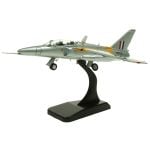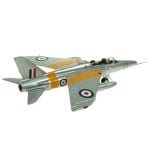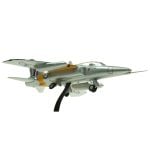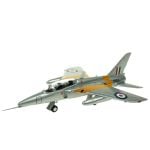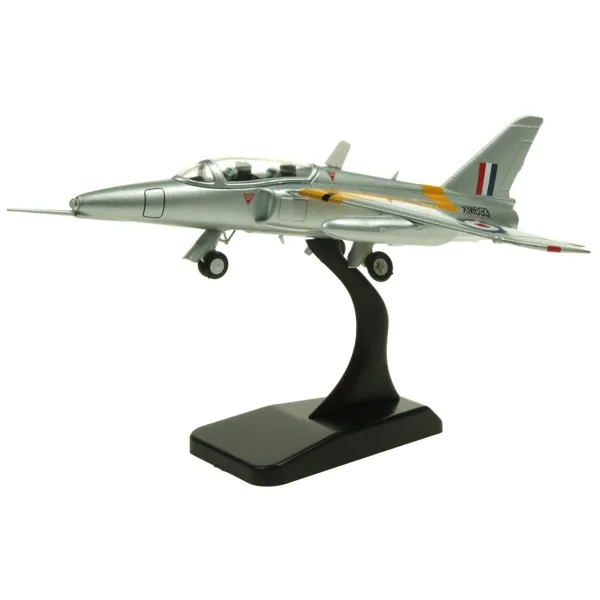Sizing
Aircraft Scale Model Chart
Below are the Lengths (L) and Wingspans (W) of the different scales/aircraft types in Cm's
| 1/200 scale | 1/400 scale | 1/500 scale | ||||
| Aircraft Type | Length CM | Wingspan CM | Length CM | Wingspan CM | Length CM | Wingspan CM |
| Airbus A300-B4 | 27 | 22 | 13 | 11 | 11 | 9 |
| Airbus A300-600 | 27 | 22 | 14 | 11 | 11 | 9 |
| Airbus A310 | 23 | 22 | 12 | 11 | 9 | 9 |
| Airbus A318 | 16 | 17 | 8 | 9 | 6 | 7 |
| Airbus A319 | 17 | 17 | 8 | 9 | 7 | 7 |
| Airbus A320 | 19 | 17 | 9 | 9 | 8 | 7 |
| Airbus A321 | 22 | 17 | 11 | 9 | 9 | 7 |
| Airbus A330-200 | 30 | 30 | 15 | 15 | 12 | 12 |
| Airbus A330-300/800/900 | 32 | 30 | 16 | 15 | 13 | 12 |
| Airbus A340-200 | 30 | 30 | 15 | 15 | 12 | 12 |
| Airbus A340-300 | 32 | 30 | 16 | 15 | 13 | 12 |
| Airbus A340-500 | 34 | 32 | 17 | 16 | 14 | 13 |
| Airbus A340-600 | 37 | 32 | 19 | 16 | 15 | 13 |
| Airbus A350-900 | 34 | 33 | 17 | 16 | 13 | 13 |
| Airbus A350-1000 | 37 | 33 | 18 | 17 | 15 | 13 |
| Airbus A380 | 36 | 40 | 18 | 20 | 15 | 16 |
| ATR-42 | 11 | 12 | 6 | 6 | 5 | 5 |
| ATR-72 | 14 | 14 | 7 | 7 | 5 | 5 |
| BAe146-100 | 13 | 13 | 7 | 7 | 5 | 5 |
| BAe146-200 | 14 | 13 | 7 | 7 | 6 | 5 |
| BAe146-300 | 15 | 13 | 8 | 7 | 6 | 5 |
| Boeing 707 | 23 | 22 | 12 | 11 | 9 | 9 |
| Boeing 717-200 | 19 | 14 | 9 | 7 | 8 | 6 |
| Boeing 727-100 | 20 | 16 | 10 | 8 | 8 | 7 |
| Boeing 727-200 | 23 | 16 | 12 | 8 | 9 | 7 |
| Boeing 737-200 | 15 | 14 | 8 | 7 | 6 | 6 |
| Boeing 737-300 | 17 | 14 | 8 | 7 | 7 | 6 |
| Boeing 737-400 | 18 | 14 | 9 | 7 | 7 | 6 |
| Boeing 737-500 | 16 | 14 | 8 | 7 | 6 | 6 |
| Boeing 737-600 | 16 | 17 | 8 | 9 | 6 | 7 |
| Boeing 737-700 | 17 | 17 | 8 | 9 | 7 | 7 |
| Boeing 737-800 | 20 | 17 | 10 | 9 | 8 | 7 |
| Boeing 737-900 | 21 | 17 | 11 | 9 | 8 | 7 |
| Boeing 747SP | 28 | 30 | 14 | 15 | 11 | 12 |
| Boeing 747-200/300 | 35 | 30 | 18 | 15 | 14 | 12 |
| Boeing 747-400 | 35 | 32 | 18 | 16 | 14 | 13 |
| Boeing 757-200 | 24 | 19 | 12 | 10 | 9 | 8 |
| Boeing 757-300 | 27 | 19 | 14 | 10 | 11 | 8 |
| Boeing 767-200 | 23 | 24 | 12 | 12 | 9 | 10 |
| Boeing 767-300 | 27 | 24 | 14 | 12 | 11 | 10 |
| Boeing 767-400 | 31 | 26 | 15 | 13 | 12 | 10 |
| Boeing 777-200 | 32 | 30 | 16 | 15 | 13 | 12 |
| Boeing 777-300 | 37 | 30 | 18 | 15 | 15 | 12 |
| Boeing 787-8 | 28 | 30 | 14 | 15 | 11 | 12 |
| Boeing 787-9 | 32 | 30 | 16 | 15 | 13 | 12 |
| Boeing 787-10 | 34 | 30 | 17 | 15 | 14 | 12 |
| Concorde | 31 | 13 | 16 | 6 | 12 | 5 |
| CRJ-200 | 13 | 11 | 7 | 5 | 5 | 4 |
| CRJ-700 | 16 | 12 | 8 | 6 | 7 | 5 |
| CRJ-900 | 18 | 12 | 9 | 6 | 7 | 5 |
| Dash8-100/200 | 14 | 12 | 7 | 6 | 5 | 5 |
| Dash8-300 | 13 | 14 | 6 | 7 | 5 | 5 |
| Dash8-400 | 16 | 14 | 8 | 7 | 7 | 6 |
| DC-8-30/40/50 | 23 | 22 | 11 | 11 | 9 | 9 |
| DC-8-62 | 24 | 23 | 12 | 11 | 10 | 9 |
| DC-8-61/63 | 29 | 23 | 14 | 11 | 11 | 9 |
| DC-9-30 | 18 | 14 | 9 | 7 | 7 | 6 |
| DC-9-40 | 19 | 14 | 10 | 7 | 8 | 6 |
| DC-9-50 | 20 | 14 | 10 | 7 | 8 | 6 |
| DC-10-10 | 28 | 24 | 14 | 12 | 11 | 9 |
| DC-10-30 | 28 | 25 | 14 | 13 | 11 | 10 |
| Do328/328Jet | 11 | 10 | 5 | 5 | 4 | 4 |
| EMB120 | 10 | 10 | 5 | 5 | 4 | 4 |
| ERJ135 | 13 | 10 | 7 | 5 | 5 | 4 |
| ERJ140 | 14 | 10 | 7 | 5 | 6 | 4 |
| ERJ145 | 15 | 10 | 7 | 5 | 6 | 4 |
| Embraer170 | 15 | 13 | 7 | 7 | 6 | 5 |
| Fokker70 | 15 | 14 | 8 | 7 | 6 | 6 |
| Fokker100 | 18 | 14 | 9 | 7 | 7 | 6 |
| MD-11 | 31 | 26 | 15 | 13 | 12 | 10 |
| MD-81/82/83/88 | 23 | 16 | 11 | 8 | 9 | 7 |
| MD-87 | 20 | 16 | 10 | 8 | 8 | 7 |
| MD-90-30 | 19 | 16 | 9 | 8 | 8 | 7 |
| MD-90-40 | 26 | 16 | 13 | 8 | 10 | 7 |
| L-1011 | 27 | 24 | 14 | 12 | 11 | 9 |
| L-1011-500 | 25 | 25 | 13 | 13 | 10 | 10 |
| Tu-154 | 24 | 19 | 12 | 9 | 10 | 8 |
Aviation 72 Code: AV7222006
Folland Gnat RAF Trainer XM693 1990 Diecast - 1/72
Only 1 In Stock
Order within for dispatch on
This is a 1/72 scale diecast scale model of the Folland Gnat RAF Trainer XM693 from 1990
The Folland Gnat is a compact, swept-wing British subsonic jet trainer and light fighter aircraft, created by Folland Aircraft for the Royal Air Force. Designed by W.E.W. Petter as an evolution of the privately developed Folland Midge, the Gnat took to the skies for the first time in 1955. Its innovative design facilitated construction in countries with limited industrial capabilities, allowing for easier manufacturing without specialized tools. While the Royal Air Force never employed the Gnat as a fighter, the Gnat T.1 trainer variant saw extensive use and gained fame as the aircraft of the RAF’s Red Arrows aerobatic team. The Gnat was also exported to nations such as Finland, Yugoslavia, and India, with the Indian Air Force ultimately becoming the largest operator and producing the aircraft under license.
An initial contract for 14 pre-production Gnat trainers was awarded on January 7, 1958, and the prototype Gnat Trainer made its inaugural flight on August 31, 1959, at Chilbolton airfield. Initially, the Ministry of Defence hesitated to place a production order due to concerns regarding the company's capacity to handle a large contract. However, following Folland's acquisition by Hawker Siddeley Aviation, which became the Hamble division, additional orders for 30, 20, and 41 trainers were placed between February 1960 and March 1962, designated as Gnat T Mk. 1. The final Gnat T.1 for the RAF was delivered in May 1965.
The Folland Gnat is a compact, swept-wing British subsonic jet trainer and light fighter aircraft, created by Folland Aircraft for the Royal Air Force. Designed by W.E.W. Petter as an evolution of the privately developed Folland Midge, the Gnat took to the skies for the first time in 1955. Its innovative design facilitated construction in countries with limited industrial capabilities, allowing for easier manufacturing without specialized tools. While the Royal Air Force never employed the Gnat as a fighter, the Gnat T.1 trainer variant saw extensive use and gained fame as the aircraft of the RAF’s Red Arrows aerobatic team. The Gnat was also exported to nations such as Finland, Yugoslavia, and India, with the Indian Air Force ultimately becoming the largest operator and producing the aircraft under license.
An initial contract for 14 pre-production Gnat trainers was awarded on January 7, 1958, and the prototype Gnat Trainer made its inaugural flight on August 31, 1959, at Chilbolton airfield. Initially, the Ministry of Defence hesitated to place a production order due to concerns regarding the company's capacity to handle a large contract. However, following Folland's acquisition by Hawker Siddeley Aviation, which became the Hamble division, additional orders for 30, 20, and 41 trainers were placed between February 1960 and March 1962, designated as Gnat T Mk. 1. The final Gnat T.1 for the RAF was delivered in May 1965.
Related Products





